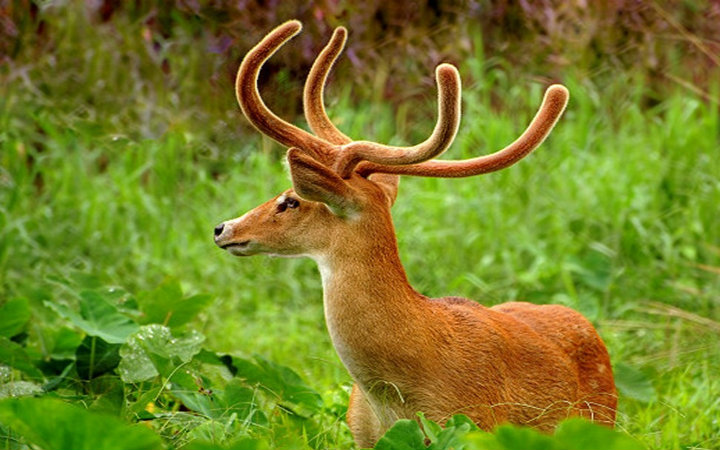Loktak Lake: The World’s Largest & Only Floating Freshwater Lake
Loktak lake, in Manipur, is the world’s largest and only floating freshwater lake. Famous for phumdis, it is a must-visit place in India if you are a nature lover.

Loktak Lake, which is known as the lifeline of Manipur, is not an ordinary lake. It is the largest lake in Northeast India. In the word Loktak, ‘lok’ means ‘stream’ and ‘tak’ means ‘the end.’ The world’s only floating national park, Keibul Lamjao National Park, is home to a wide variety of flora and fauna.
This lake is the only floating lake in the world because of the series of circular floating islands called Phumdis (also known as Phumshongs) in it. Besides, Thanga, Ithing, and Sendra islands are other islands located in the southern part of the lake.
Also, this ancient lake is important for the economy of Manipur state. The phumdis and surrounding areas of the lake are home to and a source of livelihood for the rural fishermen. It even serves as a source of water for hydropower generation, irrigation, and drinking water supply.
Let us explore more about the Loktak lake of Manipur here.
Sendra Tourist Home has a Cafeteria Attached to the Lake

The lake is located in Moirang town Bishnupur district, which is 53 km away from Imphal. Sendra Island is in the southern part of the lake. In the center of the Loktak lake is Sendra Tourist Home.
And there is a coffee shop situated on a large phumdi in the middle of the lake from where tourists can enjoy the scenic beauty of the lake. The tourists can see the small islands that are floating weeds on which people dwell.
Keibul Lamjao National Park is Rich in Flora & Fauna

On the South-Western end of the Loktak Lake is another wonder, the Keibul Lamjao National Park, which is recognized as a one-of-its-kind floating national park in the world. It is home to several endangered species of both flora and fauna.
Loktak Lake is an ideal place for bird watchers. The most commonly spotted birds in the region are black kite, northern Hill Myna, East Himalayan Pied Kingfisher, Skylark, Eastern Jungle Crow, Burmese Pied Myna, and others.
Around 57 species of waterbirds and 14 species of wetland-associated birds are found in the lake, including 28 species of migratory waterfowl. The lake also has 425 species of animals, of which 249 are vertebrates, and 176 are invertebrates. The fauna or animal species living in the lake are Indian python, wild bear, endangered sangai deer, Muntiacus muntjak, rhesus monkey, hoolock gibbon, stump-tailed macaque, Indian civet Viverra zibetha, marbled cat, Temminck's golden cat, sambhar, and barking deer.
Keibul Lamjao National Park is the Natural Habitat of Endangered Deer Species ‘Sangai’

The Keibul Lamjao national park forms the last natural habitat of one of the most endangered species named Sangai. Sangai is also the state animal of Manipur, and it is also called Rucervus eldii eldii or Manipur brow-antlered deer (Cervus eldi eldi).
One of three subspecies of Eld's deer, Sangai, was believed to be extinct once. And Keibul Lamjao was declared a national park only to preserve and conserve this deer species.
Final Thoughts
Loktak lake is indeed a unique and one-of-its-kind floating lake. It has several islands, a national park with rich flora and fauna, INA Memorial Complex, phumdis, Lokai Pat, phumdis, and Maibam Lokpaching (Red Hills) for you to explore during the tour to Loktak lake.
Interestingly, a special day is observed annually on the 15th of October at the periphery of the lake. Moreover, due to the ecological status and its biodiversity values, the lake was initially designated as a wetland of global significance under the Ramsar Convention on 23rd March 1990. It was also listed under the Montreux Record, a register of wetland sites, on 16 June 1993.
Popular Posts
10 Amazing Cities Built Near or Through Rivers
Rivers have been crucial to human settlements, commercialization, and building cities. This opens opportunities for trading goods and establishing international connections.
Kimberly Campbell
20 Most Futuristic Cities In The World
What do you think about the future? Does it bring thrill in you or terrifies you? What’s your take on high speed trains, miles...
Swati Bhandari
Mystery Of Baigong Pipes - 1,50,000 Old Construction Reveals The Ancient Technology
Baigong pipes are a series of ancient pipes found in and near Mount Baigong located about 40-45 km southwest of the city of Deli...
Kevin Green








